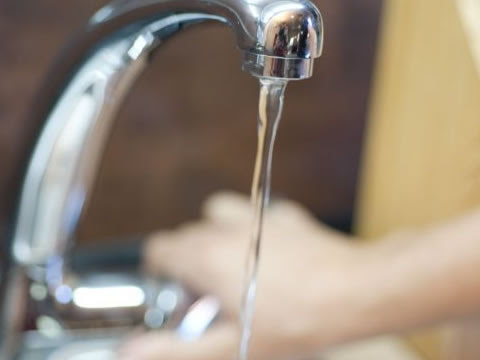Helpful Methods for Fixing Low Water Pressure in Your Home
Helpful Methods for Fixing Low Water Pressure in Your Home
Blog Article
They are making a number of great annotation relating to 4 Ways to Troubleshoot Low Water Pressure in general in this great article further down.

Low water stress in your home can be an aggravating problem, impacting everything from bathing to washing meals. If you're experiencing weak water circulation, there are a number of feasible causes and services to check out. In this overview, we'll discuss usual factors for low tide pressure and functional actions to address the issue properly.
Introduction to Low Water Pressure
Low tide pressure happens when the flow of water from your taps, showers, and other components is weak than typical. This can make daily jobs extra challenging and less reliable. Understanding the reasons for low water pressure is vital to discovering the right solution.
Common Root Causes Of Low Tide Stress
Pipe Obstructions
Over time, pipes can come to be clogged with natural resource, debris, or debris, limiting the flow of water. This is a common concern in older homes with galvanized steel pipelines.
Rust
Deterioration within pipelines can bring about leakages and decreased water stress. Rust buildup can constrict water circulation, particularly in aging plumbing systems.
Faulty Pressure Regulatory Authorities
Pressure regulators are accountable for maintaining constant water stress in your house. If they malfunction, it can result in low tide pressure or irregular flow throughout the house.
Community Water Supply Issues
Occasionally, the problem lies outside your home. Local water concerns, such as main line leakages or upkeep work, can briefly decrease water pressure in your location.
Just How to Identify Low Water Stress
Inspecting Taps and Components
Start by testing the water stress at different faucets and components throughout your home. If the problem is separated to certain locations, it may indicate localized problems.
Evaluating Pipelines
Check noticeable pipes for indications of leakages, corrosion, or blockages. Take notice of any unusual noises, such as knocking or rattling pipes, which could indicate concerns within the plumbing system.
Consulting with a Plumber
If you're incapable to identify the cause of low tide pressure, think about hiring a professional plumber to conduct a detailed assessment. They can determine underlying issues and suggest proper solutions.
Do It Yourself Solutions to Repair Low Water Stress
Cleaning Aerators and Showerheads
Mineral deposits can build up in aerators and showerheads, reducing water flow. Eliminate and clean up these components regularly to enhance water pressure.
Flushing Water Heater
Debris buildup in the water heater can restrict circulation and decrease effectiveness. Flushing the storage tank occasionally aids remove debris and keep optimum efficiency.
Examining Stress Regulator
Guarantee that the pressure regulatory authority is operating properly. Changing or changing the regulator can aid recover appropriate water stress throughout your home.
Clearing Clogs in Pipes
For small clogs, try using a plumbing snake or chemical drainpipe cleaner to clear obstructions in pipes. Be cautious when utilizing chemicals and comply with safety guidelines.
When to Call a Specialist Plumber
If DIY efforts stop working to solve the concern or if you think significant plumbing problems, it's best to seek help from a licensed plumber. They have the experience and devices to deal with complex issues securely and effectively.
Safety Nets to Preserve Water Stress
Normal Maintenance
Schedule regular maintenance for your plumbing system to stop problems such as rust, leakages, and clogs. Dealing with minor issues early can help avoid even more significant repairs in the future.
Installing a Pressure Booster
Take into consideration installing a pressure booster pump to improve water stress in locations with consistently reduced circulation. This can be specifically helpful for multi-story homes or properties with high-demand fixtures.
Monitoring Water Use
Bear in mind water use behaviors and stay clear of ill-using the plumbing system. Straightforward changes, such as staggering showers and washing tons, can help keep adequate water stress.
Verdict
Managing low tide stress can be aggravating, yet recognizing the underlying reasons and executing suitable options can restore optimal flow throughout your home. Whether it's cleansing aerators, checking pipelines, or speaking with a plumber, taking proactive steps can guarantee a stable supply of water for your day-to-day requirements.
FOUR WAYS TO FIX LOW WATER PRESSURE NOW
Turning on a shower or faucet only to find the water comes out in a sad, slow drizzle is never a good feeling. How exactly are you supposed to wash a pan or take a quick shower when it takes 10 minutes just to rinse off a little soap? The good news is that when your water pressure is bad, there's always a cause: typically one that can be easily fixed. Here are some of the most common causes of low pressure and what you can do to fix the issue:
DEBRIS AND MINERAL DEPOSIT BUILDUPS
If you notice low water pressure from just one or two of the fixtures in your house, the problem likely has to do with debris buildup. Water is full of minerals and other debris, all of which can accumulate in your pipes and on your fixtures. This can cause a blockage that affects how much water flows through. To fix this, try filling a small plastic bag with white vinegar, and use a rubber band to hang it around your showerhead or faucet. Let the head of the fixture soak for a few hours, and the vinegar should loosen the deposits.
WATER LEAKS
Leaks are another common cause of low water pressure. If water is flowing out of your plumbing through a hole or crack before it can reach your fixture, the pressure coming out of the faucet or showerhead will be lower. A plumbing professional is your best bet for finding and repairing a leak in your water supply pipes.
Leaks are another common cause of low water pressure. If water is flowing out of your plumbing through a hole or crack before it can reach your fixture, the pressure coming out of the faucet or showerhead will be lower. A plumbing professional is your best bet for finding and repairing a leak in your water supply pipes.
FOUR WAYS TO FIX LOW WATER PRESSURE NOW
Turning on a shower or faucet only to find the water comes out in a sad, slow drizzle is never a good feeling. How exactly are you supposed to wash a pan or take a quick shower when it takes 10 minutes just to rinse off a little soap? The good news is that when your water pressure is bad, there's always a cause: typically one that can be easily fixed. Here are some of the most common causes of low pressure and what you can do to fix the issue:
DEBRIS AND MINERAL DEPOSIT BUILDUPS
If you notice low water pressure from just one or two of the fixtures in your house, the problem likely has to do with debris buildup. Water is full of minerals and other debris, all of which can accumulate in your pipes and on your fixtures. This can cause a blockage that affects how much water flows through. To fix this, try filling a small plastic bag with white vinegar, and use a rubber band to hang it around your showerhead or faucet. Let the head of the fixture soak for a few hours, and the vinegar should loosen the deposits.
WATER LEAKS
Leaks are another common cause of low water pressure. If water is flowing out of your plumbing through a hole or crack before it can reach your fixture, the pressure coming out of the faucet or showerhead will be lower. A plumbing professional is your best bet for finding and repairing a leak in your water supply pipes.
Leaks are another common cause of low water pressure. If water is flowing out of your plumbing through a hole or crack before it can reach your fixture, the pressure coming out of the faucet or showerhead will be lower. A plumbing professional is your best bet for finding and repairing a leak in your water supply pipes.
A VALVE ISSUE
If you have low water pressure throughout your home, check your main shut-off valve to make sure it's completely open. You may also want to see if there's a pressure-reducing valve installed. If there is, have a plumber help you adjust the settings to get the pressure you're looking for.
OTHERS USING WATER
Believe it or not, your low water pressure could be caused by your neighbors. If you notice low pressure at certain times of day, it may be because you and the people living next to you have similar schedules - when everyone is showering at the same time, the pressure will be lower in every home. Low pressure throughout the neighborhood may also be caused by an issue with your municipal water supply. If that's the case, call the supplier to see if they're working on the issue.
https://www.rotorooter.com/blog/water-leaking/low-water-pressure-fixes/

As a fervent person who reads on 9 Reasons for Low Water Pressure in Your House, I figured sharing that topic was really helpful. Enjoyed our entry? Please quickly share it. Help others find it. Thank-you for your time invested reading it.
Click Here Report this page